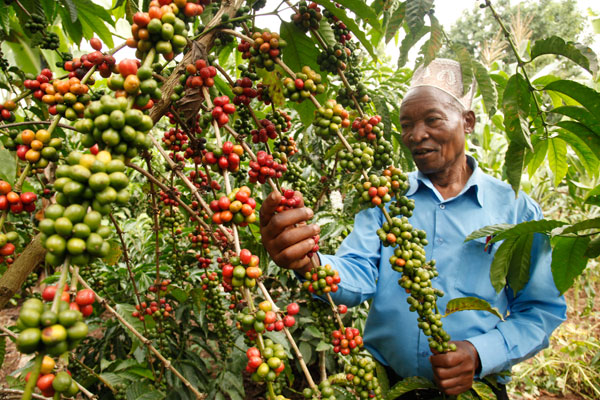The Government of Uganda has made significant strides in implementing the agricultural commitments outlined in the 2021-2026 National Resistance Movement (NRM) Manifesto, according to a new status report released by the Ministry of Agriculture, Animal Industry, and Fisheries.
The report highlights major achievements in agricultural commercialization, value addition, mechanization, and disease control, positioning the sector as a key driver of economic growth.
Key Achievements
Coffee and Maize Production Soar
The government’s efforts to improve coffee production have led to an increase in export earnings from USD 559 million in 2020/21 to USD 1.14 billion in 2023/24. More than 124.7 million coffee seedlings have been distributed, alongside 150,000 bags of organic fertilizers.
In the maize sector, production rose by 35%, from 3.5 million metric tons in 2020/21 to 5 million metric tons in 2023/24, thanks to improved seed distribution and research-driven innovations.
Boost in Livestock and Dairy Industry
The dairy sector saw remarkable growth, with milk production increasing from 2.81 billion liters in 2020/21 to 5.3 billion liters in 2023/24. The export value of dairy products also surged from USD 92.4 million to USD 257.5 million. Several milk collection centers and processing facilities have been established to improve quality and market access.
Additionally, over 19 million doses of vaccines were provided to control livestock diseases such as Foot and Mouth Disease (FMD) and Contagious Bovine Pleuropneumonia.
Irrigation and Mechanization Transforming Agriculture
Efforts to expand irrigation infrastructure have been instrumental in mitigating the effects of climate change. Over 125 valley tanks and multiple irrigation schemes have been established across the country, enabling year-round farming.
Mechanization efforts also saw the procurement and distribution of over 1,000 tractors and 600 walking tractors to farmers, reducing labor-intensive farming practices and increasing productivity.
Challenges and Future Plans
Despite these successes, the tea sector faced a decline, with production dropping from 84,446 metric tons in 2020/21 to 76,975 metric tons in 2023/24 due to limited access to fertilizers. The government has committed to addressing this by procuring fertilizers for farmers.
To further boost industrialization, feasibility studies have been completed for the establishment of a chocolate factory in Bundibugyo and a coffee soluble plant to enhance value addition.
Conclusion
The progress report indicates that Uganda’s agricultural sector is on the right path toward commercialization and industrialization. With continued government support, farmers are expected to benefit from improved productivity, increased market access, and better earnings.
As the NRM government approaches the final stretch of its 2021-2026 commitments, it remains focused on ensuring food security, job creation, and economic transformation through agriculture.
















